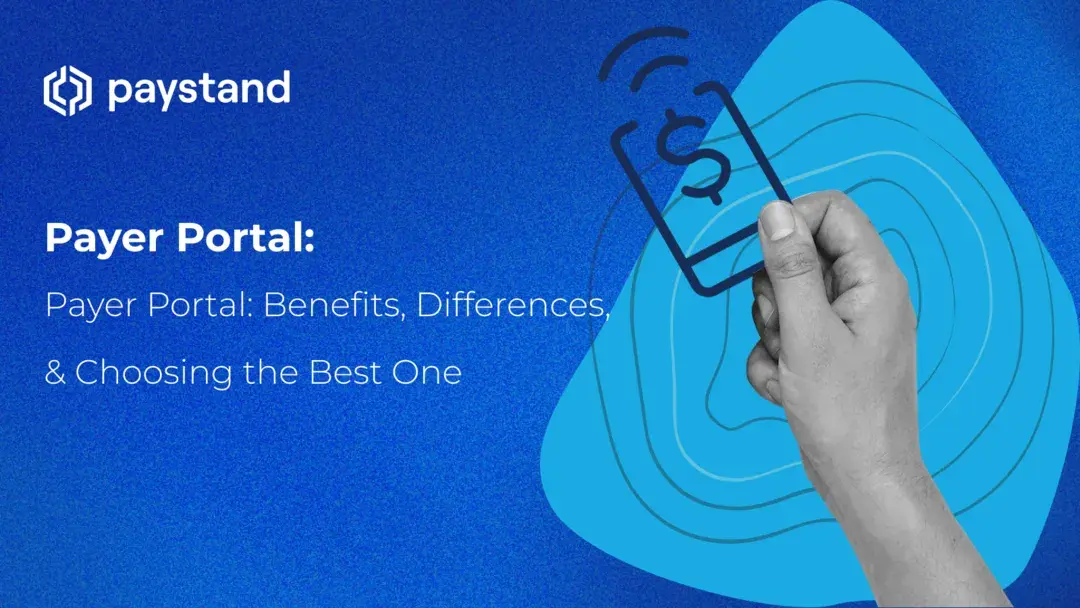Payer Portal: Benefits, Differences, & Choosing the Best One

Table of Contents
- What is a Payer Portal?
- Benefits of a Payer Portal
- Difference Between a Payer Portal and a Payment Gateway
- Difference Between a Payer Portal and a Payment Processor
- How to Choose the Best Payer Portal for Your Business
Key Takeaways
- Payer portals provide a digital interface for customers to make digital payments, linking them to payment gateways for processing
- Benefits include improved customer experience, faster payment processes, reduced labor costs, and higher customer satisfaction
- Payer portals differ from payment gateways and payment processors in their role in the payment process
- Choosing the best payer portal for your B2B payments involves considering factors like seamless integrations, multiple payment options, and easy access to information
Digital payments are only becoming more and more prevalent, making things like payer portals and seamless digital interfaces for customers essential. 53% of people use digital wallets more often than traditional payment methods. As digital payments grow, businesses need a safe and reliable way to manage transactions while continuing to enhance the customer experience.

What Is a Payer Portal?
A payer portal is an essential digital solution for processing digital payment transactions. It facilitates the transfer of payments from the customer through a payment gateway to the merchant’s bank account, allowing customers to pay online. Since online payments are becoming more common, having a payer portal is crucial for maintaining consistent revenue streams.
What Are the Benefits of a Payer Portal
Portals greatly enhance the customer experience by offering transparency into billing cycles, showing amounts owed, and storing critical account information. This convenience speeds up payment processes, reduces friction, and allows businesses to collect payments more quickly, all while decreasing labor costs for finance teams. Payer portals also simplify the checkout process, significantly increasing customer satisfaction. Plus, payer portals use encryption and other security measures to protect important and sensitive financial data, making them a safe option for online payments.
The Difference Between a Payer Portal and a Payment Gateway
While both are crucial to online transactions, a payer portal and a payment gateway serve distinct roles. A payment gateway authorizes and processes credit and debit card payments by acting as a gatekeeper of the customer's payment data. It verifies the availability of funds and authorizes transactions both online and in-store. On the other hand, a payer portal is a digital interface that connects customers to the payment gateway, facilitating online purchases.
The Difference Between a Payer Portal and a Payment Processor
A payment processor differs from a payer portal in that it acts as a middleman between the merchant and the customer’s bank, authorizing payments, verifying billing information, and transferring funds into the business’s account. In contrast, a payer portal simply allows customers to initiate the payment process, relying on payment processors and gateways to complete the transaction.
How to Choose the Best Payer Portal for Your Business
When selecting a payer portal for your business, consider the following factors:
- Seamless integrations: Choosing integrations that are meant to work together makes all the difference in terms of ease of use and getting the integration working quickly.
- Multiple payment options: Offering a variety of payment methods is not only more convenient for your customers but often leads to you getting paid faster.
- Easy access to information: Ensure your customers can clearly see what they owe, when they owe it, and what it’s for with a clear user interface.
Can clients pay through the payer portal?
Yes, clients can pay through a payer portal. They can easily view invoices, manage their accounts, and make payments using various payment methods, like credit cards, ACH transfers, and sometimes even digital wallets. This lets clients settle their accounts easily and efficiently.






%20(1)%20(1).jpg?width=100&height=100&name=IMG_3752%20(1)%20(1)%20(1).jpg)